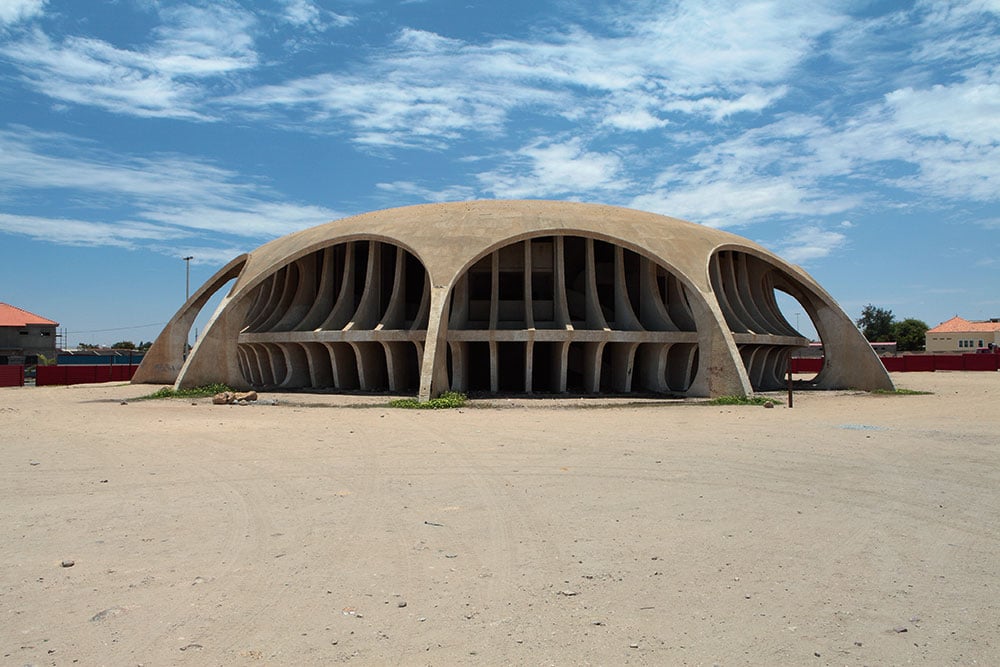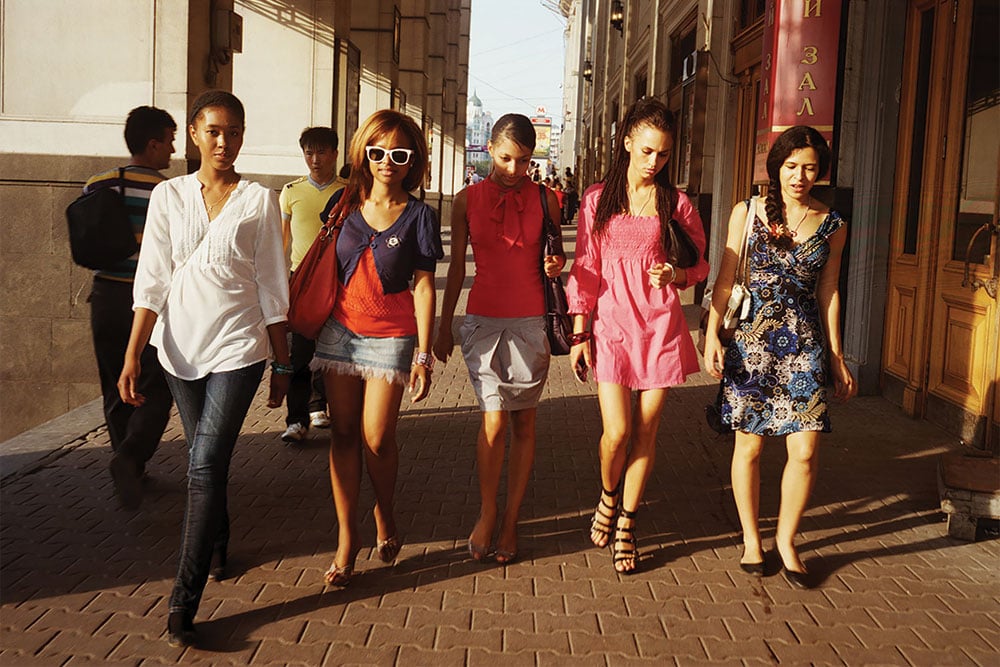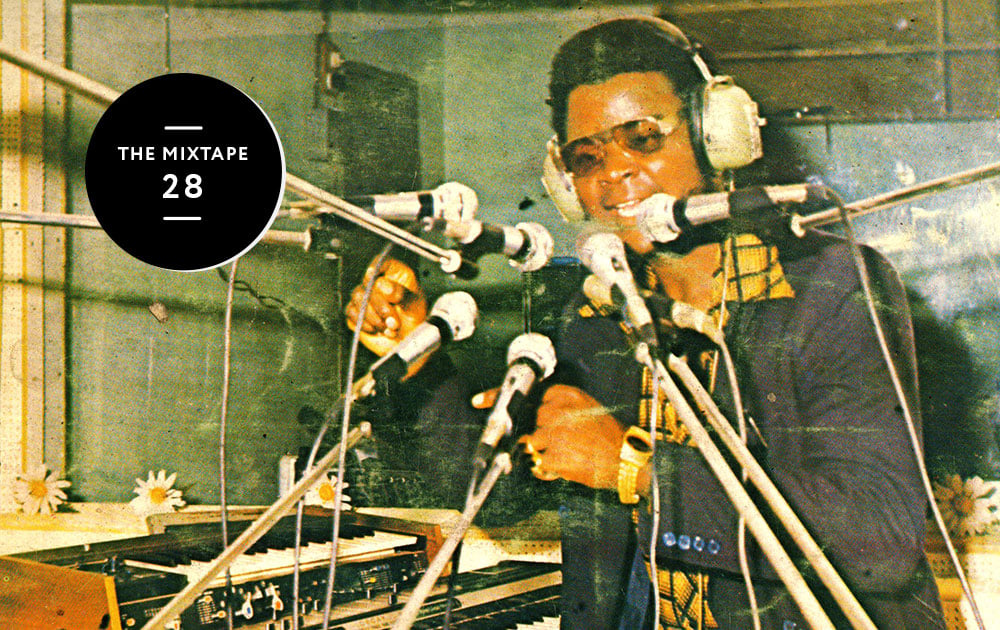Adventures of an Afro-Gypsy: how to make hip-hop by way of Africa, America and Transylvania
Red AfricaInterview with Wanlov the Kubolor, one half of hiplife duo FOKN Bois, who plays on cultural and linguistic identity in his music
Emmanuel Owusu-Bonsu was born in Ploiești, Romania at the tail end of the Cold War, his mother a Romanian and his father a Ghanaian engineering student. His story is just one example of the intersections between post-independence African states and east European socialist sponsors — in this case Kwame Nkrumah’s Ghana and Nicolae Ceaușescu’s Romania. After spending his youth in Accra, Owusu-Bonsu re-emerged as Wanlov the Kubolor: musician, campaigner and self-proclaimed “Afro-Gypsy”. He and fellow MC M3nsa make up the outrageously entertaining hiplife duo FOKN Bois, whose relentless play on cultural and linguistic identity has made them one of the most entertaining pop acts to emerge from modern Ghana.
Alongside his work with M3nsa — which includes the world’s first multi-part Pidgin English musical, Coz Ov Moni, and supporting slots for Snoop Dogg and Gorillaz — Wanlov has pursued a solo career that in recent years has taken him back to his Romanian heritage. After two albums of West African Afro-pop (2007’s Green Card and 2010’s Yellow Card), Wanlov recruited a mixed band of African and European musicians to merge his Ghanaian and Transylvanian roots. The result was 2011’s Brown Card, a unique musical tribute to Afrobeat, American hip-hop and Romanian folk. Now a full-time touring musician, he spoke to The Calvert Journal from Budapest to explain how he ended up making music of which, in his words, “Dracula and Idi Amin would both be proud.”
Video for Jesus is Coming by FOKN Bois
You describe yourself as an “Afro-Gypsy”. What do you mean by that term, which could be considered problematic, given that your mother is not Roma?
“Gypsy” to me has never had the stigma or the negative connotation that it does for some people. For me gypsy has always meant travelling, music and family. When I was young in Romania, the apartment building opposite was pretty dilapidated, with a few Roma families living there. One of my very best friends, Nicoleta, lived on the ground floor: her family put a big hole in the wall so they could bring their horse in. I remember sitting on the floor in the living room leaning against the sleeping horse, watching TV or playing backgammon.
Although my mother is not a gypsy, when Romanians or Romanian gypsies see me on the street, in London, Germany, anywhere, they say: “Look at that tzigane.” That’s what they call me
The project was to mix West African music with the east European music that I heard around the house, in cartoons, in films. It’s just this identity I have. Although my mother is not a gypsy, when Romanians or Romanian gypsies see me on the street, in London, Germany, anywhere, they say: “Look at that tzigane.” That’s what they call me.
West African music like highlife has very recognisable rhythms and instrumentation. What is it about east European folk that fits with that? Or is the combination actually very unnatural?
In 2007 I was working on the Green Card album and I had this beat playing that was a Ga Kpanlogo rhythm from Bukom. And on a different laptop I was watching something separate, a film about Romania. And at a certain point the two synced. That’s when I had the idea of a half-African, half-gypsy orchestra. I worked on it while I was finishing Green Card, finding samples that I could somehow fit together. So at first it was based on samples; then later I got a band together and recorded a live session of the band.
Video for Spr Mi Dat (Spare Me That) by Wanlov the Kubolor
For me that sounds very relevant to your mash-up of styles with FOKN Bois. One of the most entertaining things about you and M3nsa is the way in which you play with language, rapping in English, Pidgin and Twi [a native Ghanaian language]. When did you start playing with different voices like this?
With M3nsa it would happen in conversation before we developed the self-confidence to do it in music. In the late 90s we wanted to sound like the music our DJs were playing on the radio: Busta Rhymes, Talib Kweli, Snoop Dogg. It was even in our analogies and similes — “yellow like McDonalds”, or “white like snow” — none of those things are relatable if you’ve never had a TV! Then in the early 2000s, we started to make music for ourselves. When we realised that all those [American rappers] were making music for their communities, our whole horizon suddenly broadened. Now our minds are exploding with so many possibilities because we are thinking in our language.
Afro-Gypsy is like a personal experiment. You keep looking for your wholeness, you keep trying to catalogue it, finding people who relate to it. The first big fans of my new music were my brother and sister
And how does your Romanian heritage fit into what you do with M3nsa and FOKN Bois?
It was important for me to do this Afro-Gypsy music because it was a part of me that I had shunned, like I didn’t know that it made up a part of me. I could listen to a hip-hop song or a highlife song and be nodding my head. But when a gypsy song came on I also knew how to move to that. So I felt I had to research that. Afro-Gypsy is like a personal experiment. You keep looking for your wholeness, you keep trying to catalogue it, finding people who relate to it. The first big fans of my new music were my brother and sister: only people who are Ghanaian-Romanians can 100% understand the album.
Video for Never Go Change by Wanlov the Kubolor
What connects Ghana and Romania for you?
It’s crazy: when I was doing this album, I remember coming across all these similarities between Ghana and Romania that absolutely blew my mind. There are no other two countries in the world that have almost exactly the same land mass. The first President of Ghana, Kwame Nkrumah, died in Bucharest. The population is almost exactly the same. Then there are the similarities in cultural styles: the women who you pay to come and cry at funerals, that’s big business in Romania and in Ghana. They have the same instruments paralleled in different evolutions: the cimbalom [a Hungarian-Transylvanian dulcimer], and the Ghanaian xylophone; the Romanian violin, and the Ghanaian gongey, which is like a horsetail fiddle.
There are so many parallels. The people and their sincerity. The corruption and embezzlement of funds. I always say, Romania is just a white Ghana
There are so many parallels. The people and their sincerity. The corruption and embezzlement of funds. I always say, Romania is just a white Ghana. I sometimes wonder whether I have created this reality. That’s how crazy I find it. Am I the one responsible for making these countries so similar, because that’s who I am?
It sounds like a conspiracy, or something from a film…
Yeah! A film about my own life.
This special report coincides with the Red Africa season running at Calvert 22 Foundation, from February 4th to April 3rd, Wed-Sun 12pm-6pm, 22 Calvert Avenue, London E2 7JP. Further details at Calvert22.org


